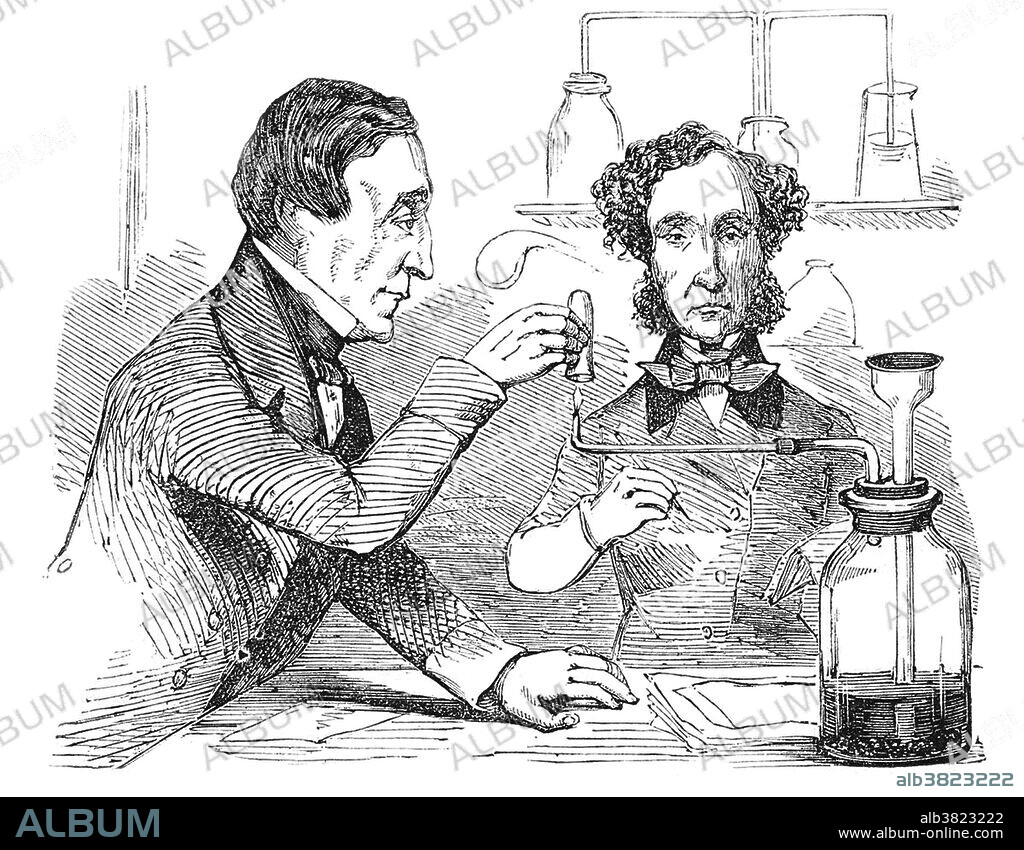alb3823222
Performing the Marsh Test, 1856

|
Añadir a otro lightbox |
|
Añadir a otro lightbox |



¿Ya tienes cuenta? Iniciar sesión
¿No tienes cuenta? Regístrate
Compra esta imagen.
Selecciona el uso:

Título:
Performing the Marsh Test, 1856
Descripción:
Ver traducción automática
Performing the Marsh Test, 1856. Doctor Alfred Swaine Taylor (left) and a colleague, performing the Marsh test on samples taken from the body of John Parsons Cook. The two were looking for traces of arsenic and antimony. The Marsh test is a method for the detection of minute amounts of arsenic in foods (the residue of fruit spray) or in stomach contents. The sample is placed in a flask with arsenic-free zinc and sulfuric acid. Arsine gas (also hydrogen) forms and is led through a drying tube to a hard glass tube in which it is heated. The arsenic is deposited as a "mirror" just beyond the heated area and on any cold surface held in the burning gas emanating from the jet. Antimony gives a similar test, but the deposit is insoluble in sodium hypochlorite, whereas arsenic will dissolve. The test was named for its inventor, the English chemist James Marsh.
Crédito:
Album / NLM/Science Source
Autorizaciones:
Tamaño imagen:
3600 x 2802 px | 28.9 MB
Tamaño impresión:
30.5 x 23.7 cm | 12.0 x 9.3 in (300 dpi)
Palabras clave:
1856 • ÁCIDO SULFÚRICO • ANALISIS • ARSENICO • ARTE • BLANCO Y NEGRO • CIENCIA • COMPROBAR • CRIMEN • DEPOSITADOS • DETECCIÓN • DIBUJO • ENVENENAMIENTO • FAMOSA • FAMOSO • FAMOSOS • FIGURA • FORENSE • GENTE • HIDROGENO • HISTORIA • HISTORICO • HOMBRE • HOMBRES • ILUSTRACION • ILUSTRACIONES • INGLES • INVENCION • INVESTIGACION • MASCULINO • MEDICINA • MEDICINAL • MEDICO FORENSE • METODO • MUESTRA • OBRA DE ARTE • PERSONA • PERSONALIDAD • PERSONALIDADES • QUIMICO • RETRATO DE HOMBRE • SIGLO XIX • TOXICOLOGO


 Pinterest
Pinterest Twitter
Twitter Facebook
Facebook Copiar enlace
Copiar enlace Email
Email
